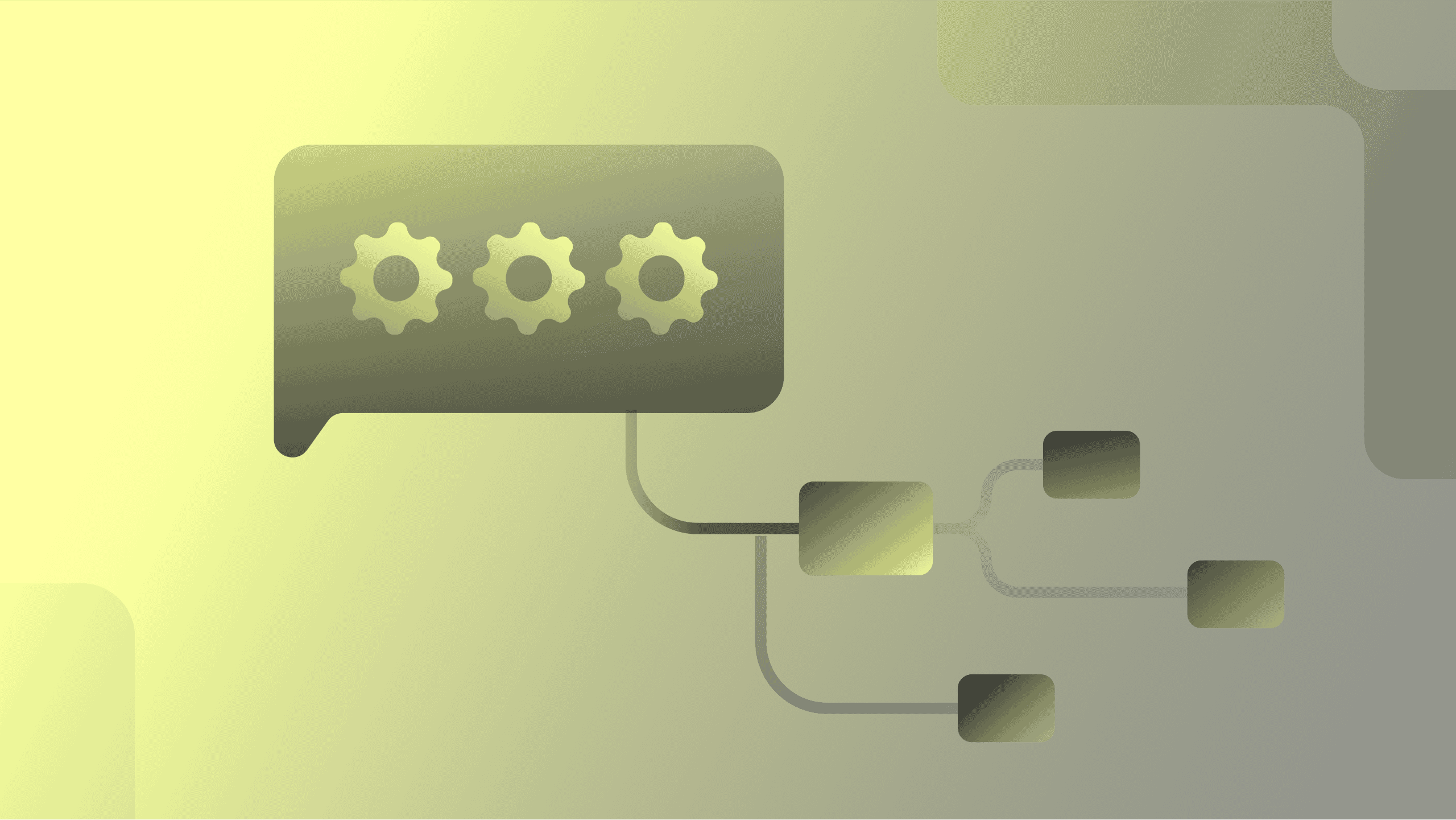
The Productivity Paradox of Modern AI
The conversation around AI in workplaces has reached a fever pitch, and at the heart of it is a single, compelling promise: a massive boost in employee productivity. We are inundated with a new generation of AI-powered tools—personal assistants, content generators, and data analyzers—all designed to make individual workers faster, smarter, and more efficient. And they do. An employee equipped with these tools can undoubtedly write a report or analyze a dataset faster than one without.
But this has created a dangerous paradox. While individual employees are getting faster at their specific tasks, the overall velocity of the business is not keeping pace. The financial close still takes weeks. Compliance audits are still a frantic fire drill. Supply chains are still brittle. The reason is simple: we have been hyper-focused on optimizing the worker, while ignoring the work.
The most significant drain on organizational productivity is not the speed at which an employee can type; it is the chaotic, manual, and cross-system business processes that form the operational backbone of the enterprise. True artificial intelligence increases productivity not by making one person’s work 10% faster, but by eliminating the thousands of hours of manual work that happen in the gaps between your systems. It’s time to elevate the conversation from personal productivity hacks to true process autonomy.
The Last Mile Problem
The current generation of AI in workplaces suffers from a “last mile” problem. They are excellent at starting a process or analyzing data, but they cannot see a complex business process through to its conclusion.
Consider the limitations of common tools:
- Personal AI Assistants: An AI assistant can help an accountant draft a variance analysis summary. It cannot, however, perform the deep, multi-system investigation required to understand why the variance occurred—a process that involves querying the ERP, the CRM, and operational databases.
- RPA Bots: A bot can be programmed to download a bank statement. But if the bank’s website changes its layout, the bot breaks. It cannot handle exceptions, understand context, or adapt to the dynamic nature of real-world business operations.
- Data Analytics Platforms: A sophisticated analytics tool can flag a potential compliance violation. It cannot, however, orchestrate the entire remediation workflow, which involves creating a ticket, notifying the correct stakeholders, gathering evidence, and documenting the resolution for auditors.
These tools are useful, but they only take the work so far. They leave the most complex, judgment-intensive “last mile” for your most expensive human talent to handle manually. This is not a sustainable model for AI increasing productivity.
The Real Source of Drag: The Manual Work Between Your Systems
To understand how AI improves productivity at an enterprise level, you must first see the invisible web of manual work that is the true bottleneck. This work doesn’t live in a single application; it lives in the manual “swivel-chair” interfaces between them.
Let’s look at a common, critical process: the quarterly user access review for SOX compliance. This is a massive drain on employee productivity across the entire organization.
- The Manual Data Pull: A compliance analyst spends days manually exporting lists of users and permissions from dozens of critical applications (ERPs, CRMs, custom software).
- The Spreadsheet Nightmare: They then spend even more time in spreadsheets, manually cross-referencing these lists against the employee master file from the HR system to identify discrepancies.
- The Email Chase: The analyst then breaks this massive spreadsheet into smaller ones and emails them to hundreds of managers, who are supposed to review and approve the access rights.
- The Manual Evidence Collection: For the next several weeks, the compliance team manually chases down approvals and painstakingly gathers these emailed spreadsheets into an “evidence package” for the auditors.
This is the reality of using AI for work in most large companies today. We have sophisticated systems, but the processes that connect them are entirely manual, held together by spreadsheets and heroic human effort. This is a colossal waste of time and talent. This is the problem that true AI in workplaces must solve.
From Personal Speed to Process Autonomy
To achieve a true step-change in organizational velocity, we need to shift our focus from making individual employees faster to making our core business processes autonomous. This requires a new class of technology. Agentic AI represents a fundamental paradigm shift in how AI improves efficiency.
Unlike a simple bot or a personal assistant, an AI agent is an intelligent entity that can manage an entire end-to-end business process. It can be instructed in plain English to execute complex, multi-step, cross-system workflows that require reasoning and judgment.
This is the key to unlocking real productivity. Instead of giving an accountant an AI tool to help them do the reconciliation faster, you give them an AI agent that they can delegate the entire reconciliation process to. This moves the human employee from being a “doer” of manual tasks to a “manager” of an autonomous digital workforce. This is how AI improves productivity at a strategic level.
Empowering Superagency with Kognitos
The ultimate goal of AI in workplaces should be to create what the McKinsey Global Institute calls “superagency“—a state where employees are empowered to work at their full potential, augmented by AI. This is the core philosophy behind the Kognitos platform.
Kognitos is the industry’s first neurosymbolic AI platform, purpose built to deliver this new model of autonomous work. We are not another personal productivity tool. We are a comprehensive platform that automates your most critical and complex back office processes using plain English.
The power of Kognitos lies in its unique approach:
- English as Code: Traditional automation is the domain of developers. Kognitos empowers your business experts—the accountants, compliance managers, and supply chain specialists who actually know the work—to build and manage their own automations using natural language. This is the essence of using AI for work in a truly empowering way.
- Conversational Exception Handling: The real world is messy. Exceptions are the norm. While traditional bots break when they encounter something unexpected, Kognitos agents pause and ask the designated human expert for guidance, learning from the interaction to become more resilient over time.
- A Hallucination-Free, Auditable Foundation: Our neurosymbolic architecture combines the power of modern AI with the logic and precision of classical computer science. This makes our platform hallucination-free by design, providing the ironclad audit trail and control that any CFO or CISO demands.
The True Benefits of Using AI in the Workplace
When you shift from task automation to process autonomy, the benefits extend far beyond simple time savings. This is what a true strategy for using ai for work delivers.
- Massive Productivity Gains: You don’t just save a few minutes on a task; you eliminate entire categories of manual work, freeing up thousands of hours for your team to focus on strategic initiatives.
- Enhanced Employee Productivity and Satisfaction: By removing the soul-crushing drudgery of manual data entry and reconciliation, you improve morale and allow your best talent to apply their expertise to the challenging, rewarding work they were hired for.
- A Resilient, Auditable Operation: Every process is executed perfectly, every time, with a complete, human-readable audit trail. This dramatically strengthens your control environment and makes audit preparation a simple, stress-free exercise.
- Organizational Agility: When business needs change, you don’t need to launch a massive IT project. Your business users can adapt the automated processes themselves in minutes by simply updating the instructions in English.
The Future of Productivity Isn’t Personal, It’s Process-Driven
The debate over how AI improves productivity has been sidetracked by a focus on personal tools and individual speed. While these have their place, they do not address the fundamental friction that slows down an enterprise. The future of work will not be defined by how quickly an employee can write an email, but by how autonomously the business can execute its most critical operations.
By shifting the focus from the worker to the work, and from the task to the process, leaders can unlock a new level of organizational velocity. The goal of AI in workplaces should not be to create slightly faster employees, but to empower them with “superagency”—the ability to delegate entire workflows to intelligent agents they control. This is how you eliminate the drag of manual work, unleash the strategic potential of your best talent, and build a business that is not just more productive, but truly autonomous and resilient. The future of employee productivity is not a better assistant; it’s a smarter, self-running enterprise.
Discover the Power of Kognitos
Our clients achieved:
- 97%reduction in manual labor cost
- 10xfaster speed to value
- 99%reduction in human error
Automation helps businesses by increasing efficiency, reducing the risk of human error, and lowering operational costs. Advanced AI automation, however, provides a more profound benefit. It automates entire end-to-end business processes, not just simple tasks, which accelerates critical business cycles (like the financial close), improves compliance, and allows skilled employees to shift their focus from manual work to strategic analysis.
AI automation improves employee productivity in two ways. At a basic level, it automates repetitive, low-value tasks like data entry, allowing employees to complete their work faster. At a more advanced level, as with Kognitos, it allows employees to delegate entire complex workflows to an AI agent. This elevates the employee from being a “doer” of manual tasks to a “manager” of an autonomous process, allowing them to apply their expertise to a much larger scope of work and focus on exceptions and strategic improvements.
AI increases productivity by automating not just simple, repetitive tasks, but also complex, multi-step processes that require reasoning and judgment. It can read and understand documents, interact with multiple software applications, handle exceptions, and learn from human feedback. This allows it to take on entire workflows, freeing up human talent to focus on more strategic, creative, and high-impact activities.
AI increases productivity in the workplace by tackling the biggest source of inefficiency: the manual work that happens between a company’s core software systems. By automating these cross-system workflows, AI eliminates thousands of hours of wasted time, reduces errors, and dramatically accelerates processes. This allows the entire organization to operate with greater velocity and agility.
The primary benefits include a dramatic increase in operational efficiency and employee productivity. Strategically, the benefits are even greater: a stronger and more provable compliance posture, faster and more data-driven decision-making, improved employee satisfaction and retention, and the ability for the business to scale without a proportional increase in headcount.








